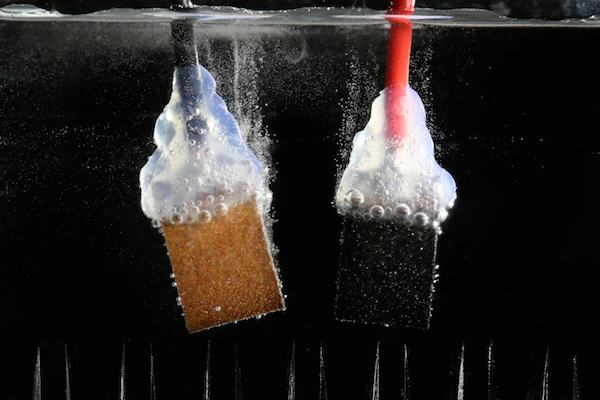
[Image above] Credit: Alfonsina Blyde; Flickr; CC BY-NC-ND 2.0
The sun bathes this beautiful planet in a tremendous amount of solar energy every single day. But the rays’ Circadian availability and variable intensity means that energy must not only be captured, but also stored, to make solar competitive enough to supersede fossil fuels as the go-to energy guy.
Scientists at Ecole Polytechnique Federale de Lausanne (EPFL) say that’s no problem, though—they have figured out how to bottle the sun.
By combining a pair of perovskite solar cells with an electrolyzer, the EPFL team can split hydrogen from water and store it using solely the sun’s energy. The research was recently published in Science.
There are a few requirements for a solar water-splitting system to be viable—cheap, efficient, scalable, and stable, writes Michigan State University chemistry professor Thomas Hamann in a separate perspectives article about the research that was published in the same issue of Science.
And if those conditions can be met, energy harvesters would only need to nab a small proportion of the available energy to power our world. “Sunlight is by far the most abundant energy resource; harvesting just a small fraction of 1% of available solar energy would be enough to indefinitely satisfy the world’s entire energy demand,” Hamann writes in the article.
The EPFL team was able to meet more of those viability requirements than any previous development by pairing up a couple of perovskite solar cells with nickel/iron-layered double hydroxide catalysts on nickel foam electrodes, which replace more expensive catalysts like platinum.
“Both the perovskite used in the cells and the nickel and iron catalysts making up the electrodes require resources that are abundant on Earth and that are also cheap,” Jingshan Luo says in an EPFL press release. “However, our electrodes work just as well as the expensive platinum-based models customarily used.”
The team’s efforts show that 12.3% of the solar energy that hits the device’s perovskite absorbers is harnessed to split H2O molecules, making the device much more efficient than its predecessors and signifying an important step toward the future of widespread renewable energy adoption.
Beyond being able to offer continuous solar energy, energy storage is also a key issue in the uptake of fuel cell technologies.
“Once you have hydrogen, you store it in a bottle and you can do with it whatever you want to, whenever you want it,” says senior author Michael Grätzel in the press release. The release continues, “Such a gas can indeed be burned—in a boiler or engine—releasing only water vapor. It can also pass into a fuel cell to generate electricity on demand.”
But, as with any discovery, there’s still work to do. The concluding sentence of the paper’s abstract sums it up: “Currently, the perovskite instability limits the cell lifetime.”
We’ll keep watching for further developments, but in the meantime, you can catch a bit more of the details in the short video below.
The paper is “Water photolysis at 12.3% efficiency via perovskite photovoltaics and Earth-abundant catalysts” (DOI: 10.1126/science.1258307).
Credit: epflnews; YouTube

